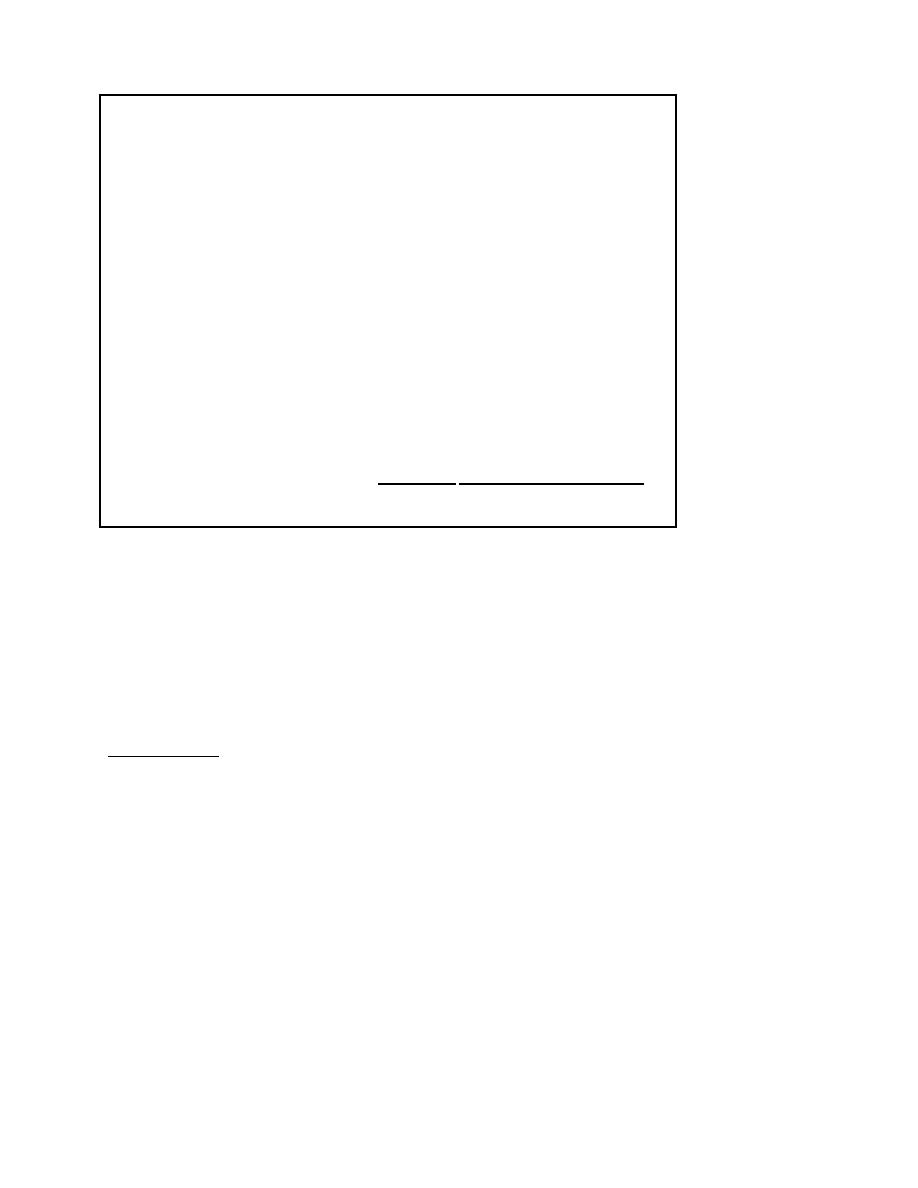
Table 10
FILTER FABRIC EQUIVALENT OPENING SIZES
Fabric
EOS
Filter X
100
Laurel Erosion Control Cloth
100
Monsanto E2B
80
Polyfilter X
70
Mirafi 140
50
Nicolon 66424
50
Nicolon 66429
40
Polyfilter GB
40
Nicolon 66487
30
[U.S. Army Corps of Engineers (1977a)
*Note: Manufacturer's product lines are subject to change. Check with the
supplier to verify current products and specifications.
The Corps of Engineers also limits the gradient ratio of the filter fabric to a maximum of 3. This is
defined as the hydraulic gradient through the fabric and the one inch of soil immediately above the fabric
(i1) divided by the hydraulic gradient over the two inches of soil 'between one and three inches above the
fabric (i2).
Gradient Ratio = i1/i2 <= 3,
(12)
Where i1 and i2 are measured by a constant head permeability test conducted as specified by the Corps in
the earlier cited reference.
Flank Protection
Flank protection is important because any shore protection structure, such as a revetment or
bulkhead, is vulnerable as erosion continues around its ends. If not prevented by flank protection, the
land eventually erodes from behind the structure, which then fails to function adequately. Figure 25
illustrates what happens when flank protection is not provided.
Return sections can be provided either during the original construction or later, as erosion
progresses. For instance, sheet pile bulkheads along low bluffs can easily be tied into the existing bank
during the initial work. This is not generally possible for high bluffs. Revetments must nearly always be
progressively lengthened as erosion continues. They should be tied to the existing bank or high ground
during initial construction, however.
53



 Previous Page
Previous Page
